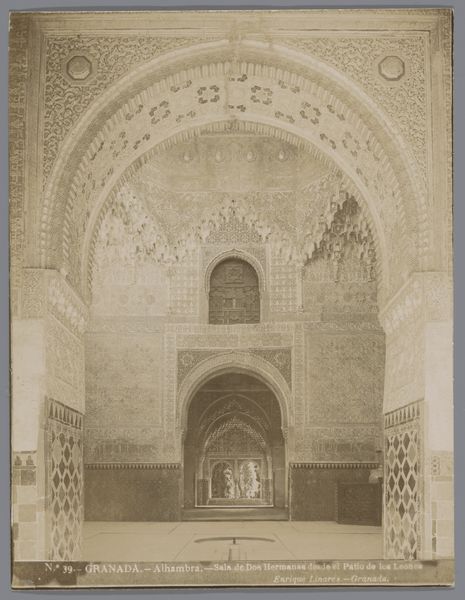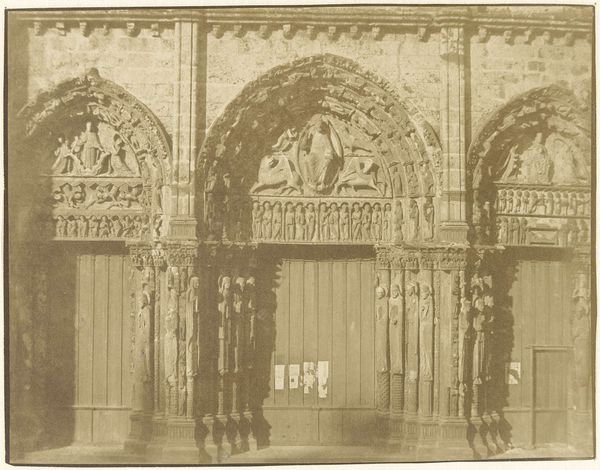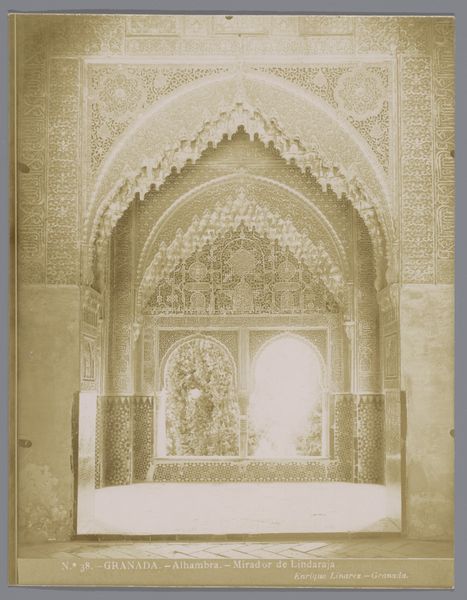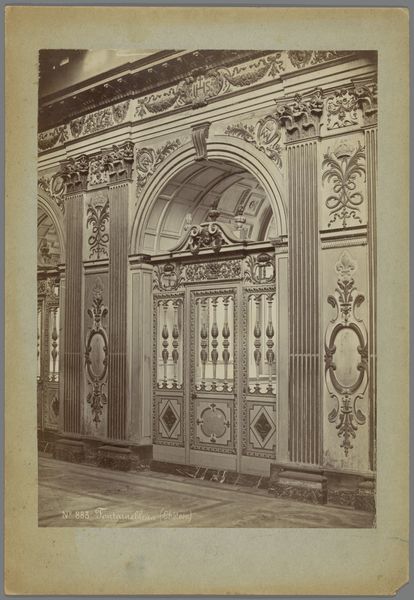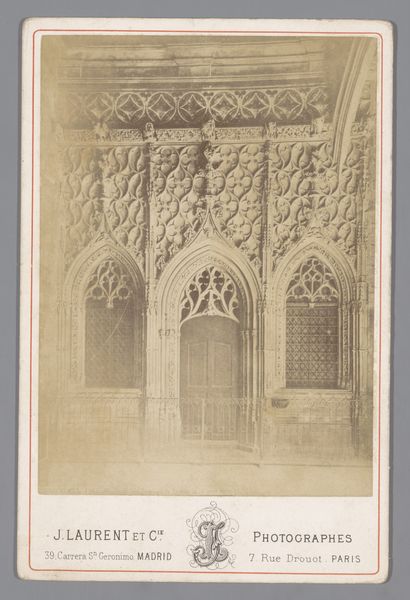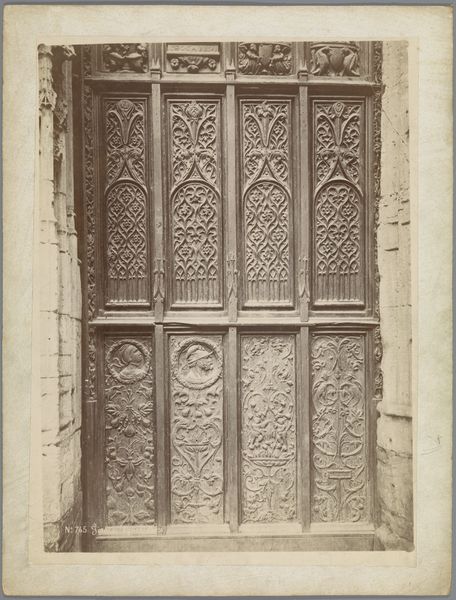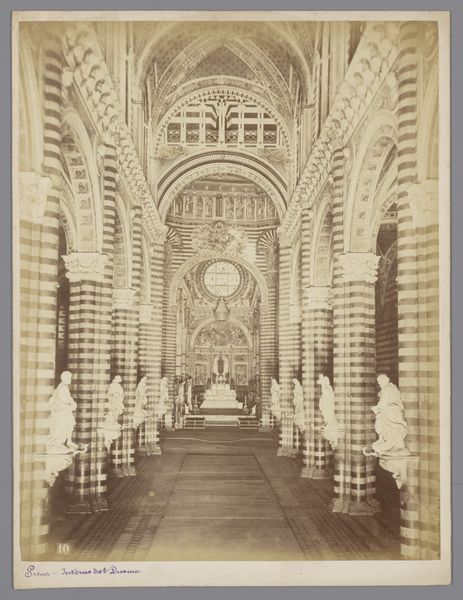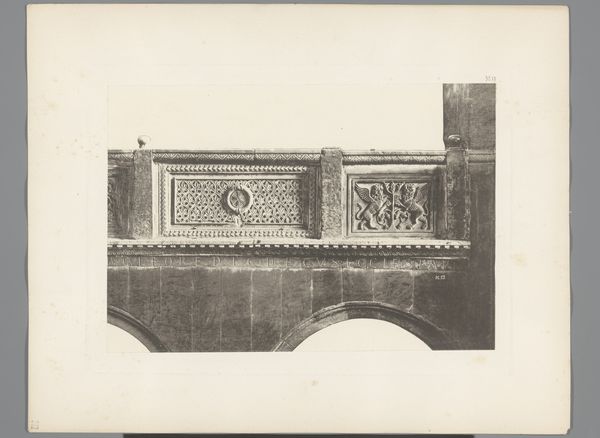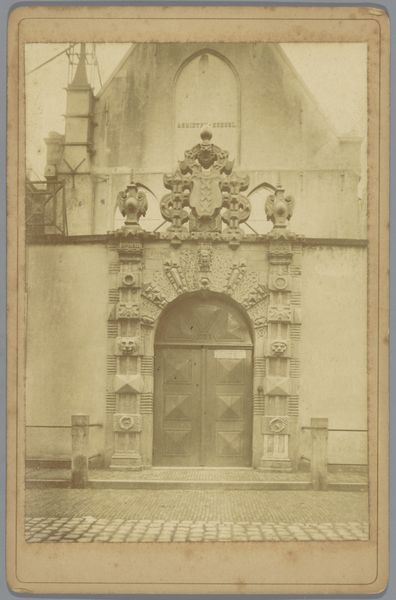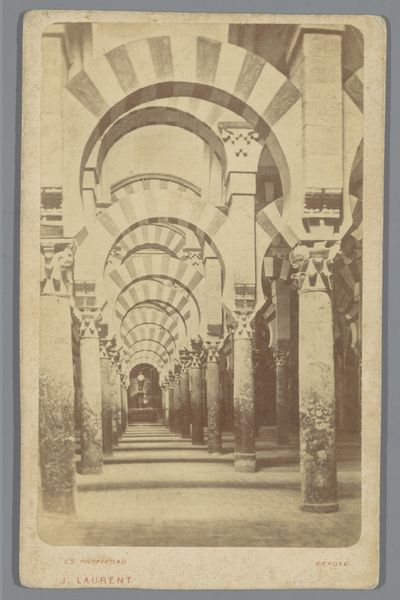
print, photography, architecture
# print
#
landscape
#
photography
#
geometric
#
ancient-mediterranean
#
orientalism
#
islamic-art
#
decorative-art
#
architecture
Dimensions: height 250 mm, width 188 mm
Copyright: Rijks Museum: Open Domain
Editor: Here we have a photographic print from between 1860 and 1900 by Giuseppe Incorpora, depicting the bronze portal of the Monreale Cathedral. The photo’s sepia tone gives it an antique feel, and the sheer intricacy of the doorway is striking. What strikes you most about this image? Curator: What stands out is the tension embedded within this representation. The Monreale Cathedral is a powerful example of cultural synthesis – Norman architecture infused with Arab and Byzantine artistic traditions. Giuseppe Incorpora, through his lens, captures not just the physicality of the door, but also a complex history of conquest, negotiation, and cultural exchange that defined medieval Sicily. Do you see how the geometric patterns reminiscent of Islamic art contrast with the biblical scenes depicted on the panels? Editor: Yes, now that you mention it, it’s quite obvious! The contrast makes me wonder about the people who created and commissioned the artwork. Curator: Exactly! Who were the patrons? Who were the artisans? How did the blending of these distinct visual languages serve specific political and ideological purposes in a multicultural society? Incorpora’s photograph invites us to consider the power dynamics inherent in the creation and preservation of such a monument. Think about the choices made in composition, and what is not shown, such as the racial identity of the builders, their access, the role of gender and so on. How can photographs reinforce or disrupt dominant historical narratives? Editor: I see how the photograph isn’t just a record but an interpretation shaped by social context. Thanks, that’s a lot to think about! Curator: And hopefully question. These visual archives urge us to interrogate, always, who has the power to represent whom, and to what end.
Comments
No comments
Be the first to comment and join the conversation on the ultimate creative platform.
